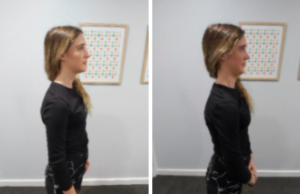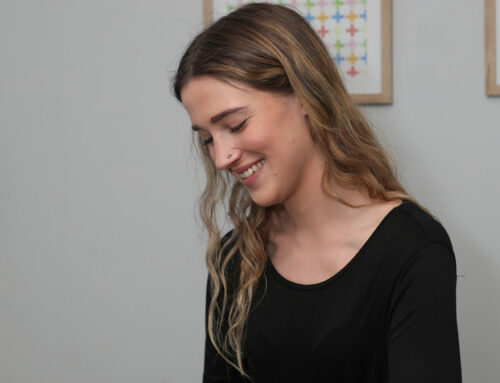Did you know that half to three quarters of the adult population globally have suffered from a headache in the last year? That’s a lot of people!
Did you also know that one type of headache, called a cervicogenic headache, is entirely caused by a dysfunction or injury in your neck?
Cervicogenic headaches affect up to 4% of the global population and make up 17% of those who suffer from severe headaches.
What are Cervicogenic Headaches?
 A cervicogenic headache is pain that is felt in your head, that originates from a source in your neck. If you do suffer from cervicogenic headaches you may have decreased neck range of motion, certain neck movements may worsen your headache, or pushing on certain points in the neck will bring on your headache.
A cervicogenic headache is pain that is felt in your head, that originates from a source in your neck. If you do suffer from cervicogenic headaches you may have decreased neck range of motion, certain neck movements may worsen your headache, or pushing on certain points in the neck will bring on your headache.
The headache is most commonly on one side of your head and will generally radiate from the back of the head to the front and behind the eye. The headache is usually accompanied by neck pain, but not always.
What Causes a Cervicogenic Headache?
A cervicogenic headache is caused by a disorder of in the neck. One of many structures in your neck may be affected, such as bones, muscles, discs or ligaments. A common cause that we see as osteopaths is a strain (overstretching or irritation) of the ligaments around the top three joints in your neck, often called a ‘postural strain’. This strain creates sensitisation of the trigeminocervical nucleus, which is a fancy way of saying a bundle of nerves that sends pain signals to both the neck and the head.
 The most common causes of a postural strain in your neck are:
The most common causes of a postural strain in your neck are:
- Head forward posture (causing increased pressure on the top three neck joints and neck muscles)
- Stiffness in your upper and mid-back
- Prolonged time sitting or standing in awkward postures (often extended time looking down)
Can Osteopathy Help with my Cervicogenic Headaches?
Yes, we certainly can! As osteopaths we complete a comprehensive history and assessment to find the source of your pain and to discover what other areas of the body may be influencing your headache. This may include your neck, mid-back, or even your jaw.
As osteopaths, we treat cervicogenic headaches with hands on treatment like massage, stretching, articulation, manipulation (cracking), dry needling and radial shockwave therapy to decrease your pain and improve your function. We can provide ergonomic and lifestyle advice regarding your posture as well as exercises to keep your neck and back mobile and strong.
If you have any questions or you’re looking to book an appointment, don’t hesitate to give our friendly reception team a call on 5941 4157 or email me at maya@pakenhamosteopathy.com.au.
Four Exercises for Cervicogenic Headache:
1) Scalene stretch
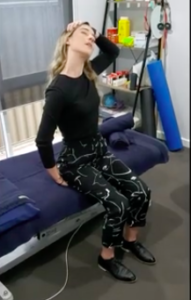 In a seated position
In a seated position
- Back straight and shoulders relaxed
- Place your right hand under your right buttock
- With your left hand extend your neck back and to the side
- You should feel a stretch at the muscles at the front of your neck
- Stretch should be held for 20-30 seconds
- Click HERE for the video demonstration
2) Mid-back extension mobility
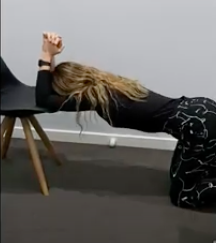 On the floor on your hands and knees
On the floor on your hands and knees
- Put your arms (resting on your elbows) up on to a bench or chair
- Your chest should drop down towards the floor
- You should focus on staying rounded through your lower back but arching through your mid-back
- This can be completed 10 times once a day
- Click HERE for the video demonstration
3) Scapular retractions in 4 point kneel
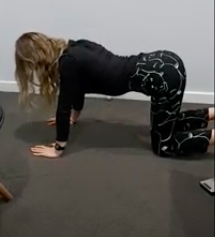 On the floor on your hands and knees
On the floor on your hands and knees
- Allow your body to drop towards the floor and focus on squeezing your shoulder blades together
- Then by pushing your body away from the ground you should feel your shoulder blades moving apart
- What you should focus on is not bending through the spine but only moving the shoulder blades
- Click HERE for the video demonstration
4) Chin tucks
In a standing position
- Back straight and stretch up through spine
- Tuck your chin in by bringing your head back (give yourself a double chin)
- Focus on stretching your head up while tucking your chin in
- Click HERE for the video demonstration
